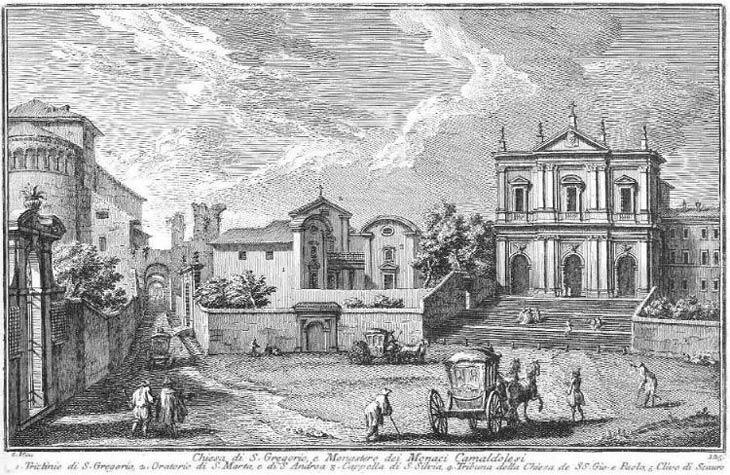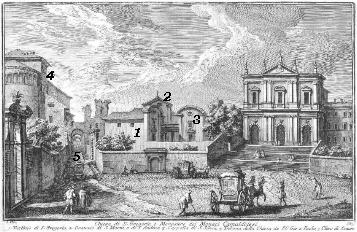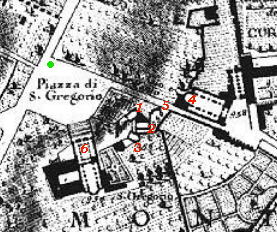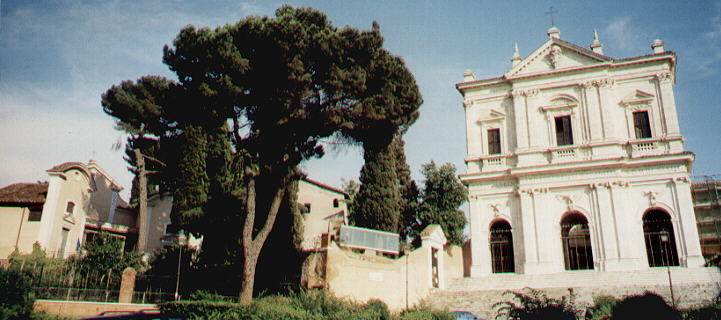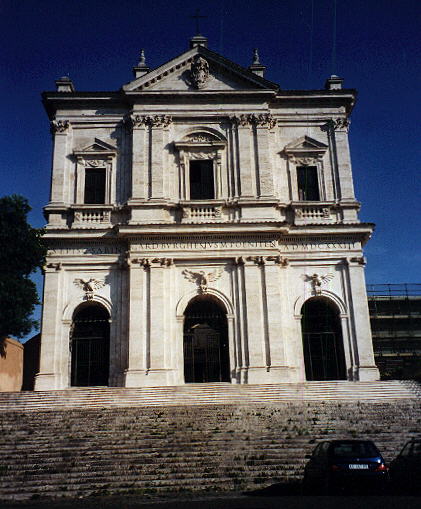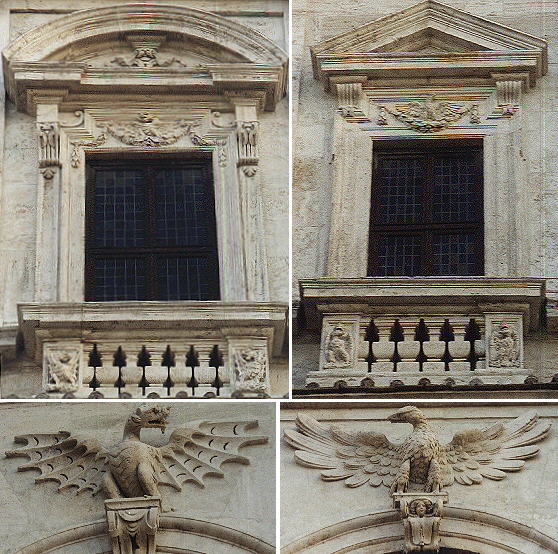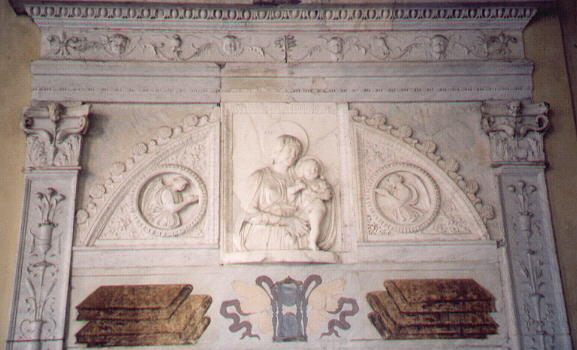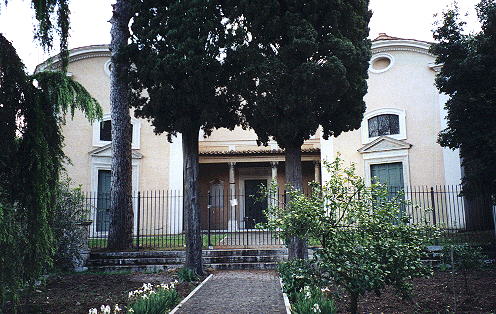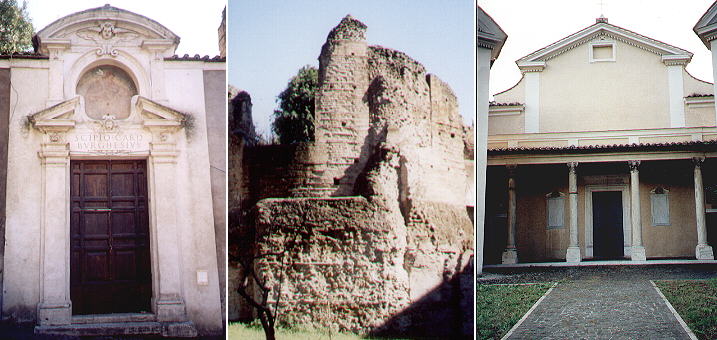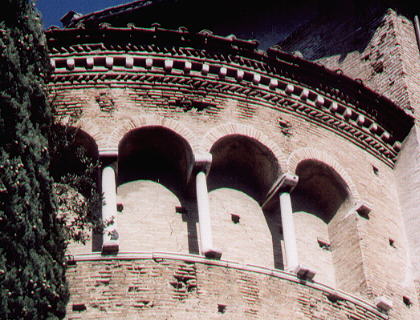  Chiesa di S. Gregorio e Monastero dei Monaci Camaldolesi (Book 7) (Map B3) (Day 5) (View C10) (Rione Campitelli) In this page:
This area of Rome (Celio, one of the seven historical hills) was at Vasi's time almost countryside as we can
see from the state of the streets. The view is taken from the green dot in the small 1748 map here below.
In the description below the plate Vasi made reference to: 1) Triclinio di S. Gregorio (S. Barbara); 2) SS. Marta e Andrea; 3) S. Silvia; 4) Tribuna di SS. Giovanni e Paolo; 5) Clivo di Scauro.
5) is shown in another plate. The small map shows also 6) S. Gregorio.
The view over S. Gregorio Magno and the three chapels is unchanged. The church is also called S. Gregorio al Celio after the name of the hill.
The old church built in 575 was thoroughly restored by Cardinal Scipione Borghese in 1633. Giambattista Soria built the steps and a new theatrical (false) façade which leads to an atrium and then to the church. The decoration is based on the heraldic symbols of Cardinal Borghese (eagles and dragons).
The atrium before the church is decorated with frescoes and it has several funerary monuments. The monument to the canon Lelio Guidiccioni (d. 1643) is rather peculiar because while its lower part shows a typical iconography (hour-glass) of the XVIIth century, the reliefs in its upper part have a Renaissance grace. They are thought to come from the tomb of Imperia, a famous courtesan of the early XVIth century. She lived in a palace in Via Giulia where she died at the age of 26. Her beauty was such that a poet wrote: "The gods made two gifts to Rome: Mars gave the Empire and Venus Imperia".
In the little graveyard of the monastery St. Gregory built these little chapels which also were restored by Cardinal Scipione Borghese. On the left the chapel of S. Barbara, in the centre that of St. Andrew and to the right S. Silvia, mother of Gregory. Cardinal Borghese built a direct entrance to the three chapels in the little street (Clivo di Scauro) which leads to SS. Giovanni e Paolo. In the garden there are some ancient ruins thought to belong to a library built by pope Agapetus I (d. 536).
The left part of the plate shows the apse of SS. Giovanni e Paolo decorated
in the early XIVth century with a gallery. The brickwork of the cornice dates back to the XIIth century.
Next plate in Book 7: Monastero de' Monaci Cisterciensi Next step in Day 5 itinerary: Chiesa de' SS. Nereo e Achilleo Next step in your tour of Rione Campitelli: Palazzo Augustale
Go
to |
All images © 1999 - 2003 by Roberto Piperno. Write to romapip@quipo.it
